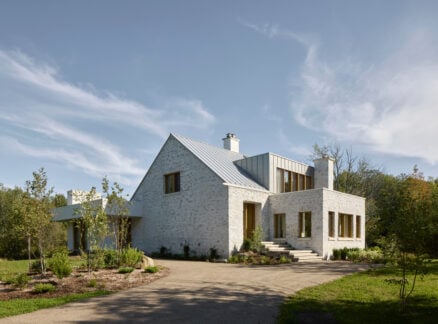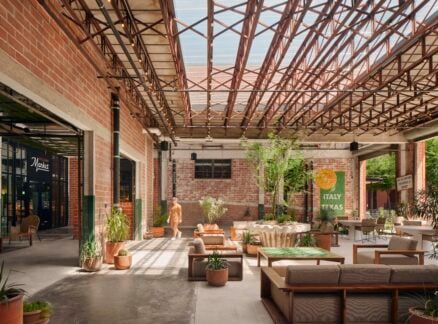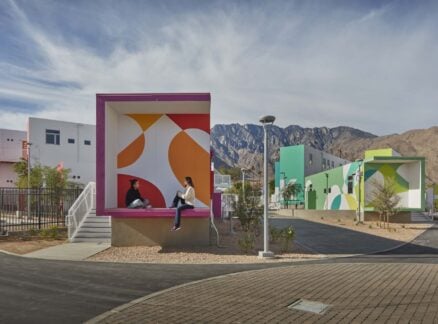March 15, 2005
Chang Yung Ho’s New Chinese Architecture
Far from the limelight of China’s construction boom, a new generation of young Chinese builders is emerging. One in particular, Chang Yung Ho, is quietly cementing himself as the country’s first architect of significant stature. Along with his studio, Atelier FCJZ—which is housed in the Old Summer Palace on the outskirts of Beijing—he is realizing […]
Far from the limelight of China’s construction boom, a new generation of young Chinese builders is emerging. One in particular, Chang Yung Ho, is quietly cementing himself as the country’s first architect of significant stature. Along with his studio, Atelier FCJZ—which is housed in the Old Summer Palace on the outskirts of Beijing—he is realizing a number of projects that bear hallmarks of a style that is thoroughly contemporary, yet rooted in the Chinese vernacular. Nine of his buildings are due to break ground this year. He also has just been appointed chair of MIT’s school of architecture.
Most notable about Chang’s projects are their size and their location. Many are smaller projects and concern the fields of education, the arts, and civic building. While Chang is doing some work in Beijing, most of his designs are in the “other” China: the provinces where the vast majority of the country’s population live, and which are largely left out of China’s relentless economic growth.
Chang projects nearing completion include a corporate incubator in Dongguan (a small Cantonese city), the Hebei Education Publishing House in Shijiazguang (the dusty coal-laden capital of the Hebei province), and a tourist orientation center on a prairie in Inner Mongolia. There are also an arts and academic complex in Xiangxi (a small town in Western Hunan province), the master plan of a “museum town” north of Chengdu (in the Sichuan province), vacation villas in Nanjing, and a collaboration with the artist Ai Wei Wei in the small town of Jinhua (in the Zhejiang province). Furthermore, he has become the first Mainland Chinese architect to work overseas, with a publishing house in Paju, Korea; a public housing project in Gifu, Japan; and the temporary Chinese national pavilion at the Venice Biennale.
In contrast to the flamboyant airports, concert halls, museums, office campuses, and stadia that non-Chinese architects like Rem Koolhaas, Zaha Hadid, Foster & Partners, and Herzog & de Meuron are designing in China, Chang’s projects are pared-down and intimate.
“There is a play of confidence, we saw it before in Japan, Korea, and Taiwan,” says Chang, attempting to explain the wave of grand civic projects being designed by foreign stars. But he is not threatened by them. “There shouldn’t be a Chinese architecture [per se],” he says, “but our traditions should live on, and perhaps we can explore them through architecture.”
Visually, this is what Chang is doing. His work synthesizes the muscular, though elegant, proportions of imperial Chinese architecture with the earthy, industrial quality of Maoist monochrome. The style is completely new, yet still looks and feels Chinese.
Chang himself describes his architecture as “Duchamp marrying a Chinese painting marrying urbanism producing a child that could be called contemporary Chinese architecture.”
Chang’s Western influences come from his education and several teaching stints in the U.S. His father, architect of the People’s Revolutionary Museum on Tiananmen Square, encouraged young Yung Ho to go to school overseas, as China’s universities were laying dormant in the throws of the Cultural Revolution. Originally drawn to painting, Chang chose architecture because he felt he could succeed in the field. He made his way to Ball State University, where he received his undergraduate degree, and U.C. Berkeley, where he received his Master’s. He took up teaching positions at Ball State, the University of Michigan, and Rice University, and he and his wife (also an architect) spent time traveling throughout Europe on a fellowship.
In the early 1990s, Chang decided to move back to Beijing and begin his own practice. His first notable commission was the Xishu Bookstore in Beijing, which is a small shop tucked inside some bland industrial blocks. Since then, he has done work for Peking University, where he is head of the architecture program, and realized buildings in places as far flung as Chongqing, Qingdao, and the Guangdong province. His studio, which was founded in 1993, has grown from three to two dozen employees.
“Is there a Chinese space?” Chang says, “I really don’t know.” Yet he insists that even while his work remains firmly contemporary and very much in the spirit of global interdependence, he is fusing a universal Modern with the Chinese. “The visuals of the Chinese tradition are always there for me,” he says.





